
Anyone who's ever gotten vinegar or lime juice into a cut understands that acidity has a powerful effect on muscle tissues. That painful memory provides an insight into an unusual and elegant method of preparing fish. This technique, called ceviche, harnesses the acidity of lime juice and other ingredients to "cook" the fish without heat. The marinade works well on most varieties of fish, but scallops and shrimp are especially good choices for home cooks wanting to experiment with the process.
Cooking With Acidity
When you cook a piece of fish conventionally, the heat causes a number of physical changes in the flesh. The proteins in the muscle tissues coagulate, like an egg in a skillet, tightening and giving the fish a firm texture. White-fleshed fish change from translucent and pearly to opaque and white, while salmon changes from a vividly dark hue to a milder pink. Acidity affects the muscle tissues in exactly the same ways. A piece of fish or shellfish soaked in lime juice or other acids will become firm and opaque, just as it would if cooked by heat.
Ceviche and Shellfish
This pseudo-cooking method gives fish a lighter, more delicate texture than conventional cooking. That makes it an ideal technique with shrimp and scallops, which are easily -- and all too frequently -- marred by overcooking. A relatively brief bath in this marinade complements the sweetness of the shellfish with the bracingly clean acidity of the limes. Small shrimp can be marinated whole, while larger shrimp are often butterflied to speed the action of the lime juice. Similarly, small scallops can be marinated whole, but large specimens are usually sliced into thinner discs.
Making Your Own
Marinating shrimp or scallops at home is simple enough for even inexperienced cooks, yielding a sophisticated appetizer or light meal. Mix lime juice and other marinade ingredients in a glass or stainless-steel bowl, which resists chemical reactions that might otherwise discolor the fish. Most ceviche marinades include some salt and other spices, such as crushed chili flakes or fresh hot peppers. For small shrimp or sliced scallops, marinating time can be as little as 10 to 20 minutes. Larger pieces might require as long as two hours. Taste a sample piece periodically, and drain your shellfish when they reach your preferred texture and intensity of flavor.
Keeping It Safe
The relatively high acidity in ceviche marinade provides a modest level of protection against bacteria and foodborne illness, but it's not as effective as cooking. Always buy the highest-quality fish you can find, either very fresh at seaside markets or sushi-grade frozen fish. Wash your hands, utensils and work surfaces scrupulously before you start, and keep the fish and the prepared marinade in your refrigerator until you combine them. Once the shrimp or scallops are in the marinade, refrigerate them again until mealtime. To serve, drain the marinade and arrange the seafood on a serving platter or individual plates. Discard any that's uneaten after two hours.
Related Articles

Jumbo Shrimp Nutritional Facts

How to Pan-Sear Swordfish
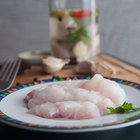
How to Pickle Fish

How to Make Sardines and Mackerel

How to Brine Fish Before Cooking It
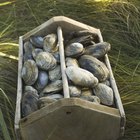
How to Cook Shucked Frozen Clams
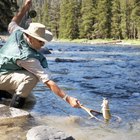
How to Brine Trout to Smoke
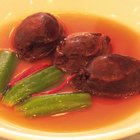
How to Cook Abalone

How to Steam Lobster & Shrimp

How to Cook Swai White Fish on the Grill
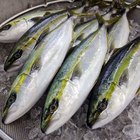
The Best Way to Smoke Yellowtail
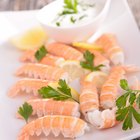
How to Cook Langoustines
How to Cook a Turbot in the Oven
How to Cook Chilean Sea Bass Cheeks

Why are Lobsters Cooked Alive?

How to Cook White Perch
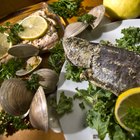
Fish Cooking Temperature
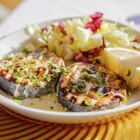
How to Grill and Smoke Swordfish

How to Cook Walleye by Broiling

How to Cook Drum Fish
References
- On Food and Cooking: The Science and Lore of the Kitchen; Harold McGee
- On Cooking: A Textbook of Culinary Fundamentals; Sarah Labensky, et al.
- Serious Eats: The Food Lab -- Ceviche And The Science Of Marinades
Writer Bio
Fred Decker is a trained chef and prolific freelance writer. In previous careers, he sold insurance and mutual funds, and was a longtime retailer. He was educated at Memorial University of Newfoundland and the Northern Alberta Institute of Technology. His articles have appeared on numerous home and garden sites including GoneOutdoors, TheNest and eHow.
Photo Credits
Jupiterimages/Stockbyte/Getty Images